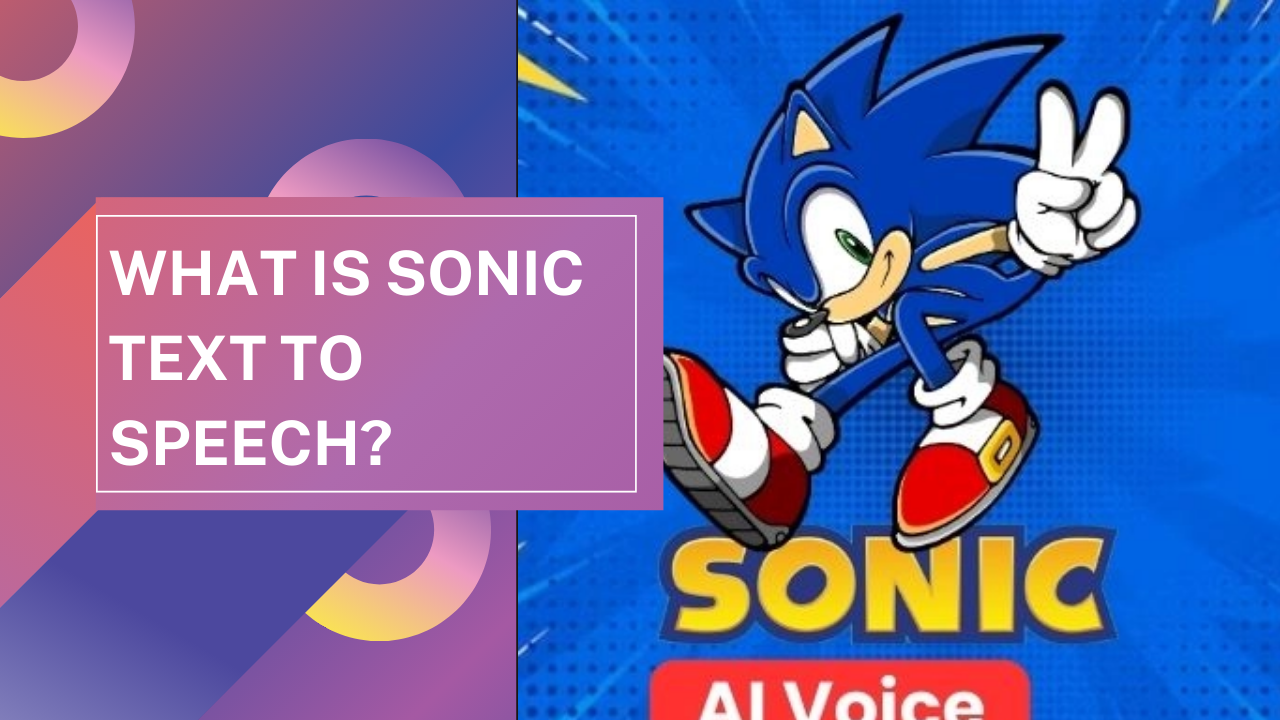Sonic Text to Speech (TTS) is a technology that converts written text into spoken words using artificial intelligence (AI) and natural language processing (NLP). It enables devices and applications to read aloud text-based content, enhancing accessibility and user experience for individuals with visual impairments or those who prefer auditory information.
In this article, we will discuss the functionality and applications of Sonic Text to Speech technology, exploring its impact on accessibility, communication, and user interaction in various domains such as assistive technology, education, entertainment, and customer service.
Understanding Sonic Text To Speech
Sonic Text to Speech (TTS) is a tech tool that turns written words into spoken voice. It’s designed to read out text like a human would. This is super helpful for folks who prefer listening over reading, or for those who need support due to visual impairments.
The way it works is pretty straightforward. You enter text into the system, and it uses special algorithms to convert the words into speech. This speech sounds quite natural, thanks to advancements in technology. It can even mimic different accents or emotions to some extent.
Overall, Sonic TTS makes information more accessible to everyone. Whether you’re driving, cooking, or just prefer audio, it can make life easier by reading text out loud for you. It’s a simple yet powerful tool that bridges the gap between the written word and spoken language.
How Sonic Text To Speech Works?
Text Preprocessing
The input text is preprocessed to expand contractions, convert numbers and abbreviations into words, handle punctuation, etc. This prepares the text for speech synthesis.
Text Analysis
Linguistic analysis is done on the text including part-of-speech tagging, word segmentation, and sentence parsing. This extracts the phonetic and prosodic information needed for accurate pronunciation.
Waveform Generation
Based on the text analysis, a mathematical model generates the speech waveforms that correspond to the phonemes (basic units of sound) of the words. Parameters like pitch, tone, speed are incorporated.
Waveform Synthesis
The generated waveforms are then put together and further processed to adjust volume normalization, smooth transitions between words/sentences, and filter any audio artifacts.
Speech Output
The final audio output is a synthetic human-like voice reading out the input text with all the appropriate cadence, expression, and pronunciation.
Highlight key features and advantages of Sonic Text To Speech
Sonic Text to Speech is a tool that converts written text into spoken words. Think of it like a buddy who reads out text for you. Here are some key features and cool things it can do:
- Natural Sounding Voices: The voices sound pretty real, not robotic. It’s like listening to a friend talk.
- Multiple Languages: It can speak various languages, so it’s like having a multilingual friend.
- Speed Control: You can make it talk fast or slow, depending on how you like to listen.
- Easy Integration: If you’re working on an app or a website, adding Sonic to it is straightforward. It’s like adding a new skill to your project without much hassle.
- Accessibility: It’s great for people who have trouble reading text on screens. It’s like giving them a personal narrator.
- Cost-Effective: Usually, these tools are pretty affordable, making them accessible to individuals and small businesses.
- Customization: You can often tweak the voice to make it sound the way you want.
Benefits of Using Sonic Text To Speech
- Accessibility: It makes content accessible to people who have difficulties reading text due to disabilities. This way, everyone can enjoy and access your content, including your SubtitleO app’s outputs.
- Multitasking: Users can listen to content while doing other things. Imagine someone learning from a video enhanced with subtitles and voiceovers from your app while they’re cooking or exercising.
- Learning and Comprehension: Some people understand and retain information better when they hear it. TTS can aid in learning and retention, especially in educational content.
- User Engagement: Adding a voiceover to videos can make them more engaging and personal. This could be a game-changer for your SaaS app, making videos not just visually appealing but also audibly engaging.
- Time and Efficiency: TTS can save time for users and creators alike. Instead of reading a lengthy text, users can listen to it as they go about their day. For creators, it offers a quick way to provide audio for their content without recording it themselves.
- Language Learning: It’s a great tool for learning new languages, as it helps with pronunciation and understanding speech patterns. This could be an interesting feature for your app if you’re targeting a global audience or educational sectors.
- Customization: Advanced TTS technologies offer various voices, languages, and accents, allowing you to customize the auditory experience to match your app’s branding or the user’s preferences.
FAQs
What is Sonic Text to Speech?
Sonic Text to Speech is a technology that converts written text into spoken audio in a way that sounds natural and lifelike.
How does Sonic Text to Speech work?
Using advanced algorithms, Sonic Text to Speech analyzes written text and generates corresponding speech sounds, mimicking human speech patterns and intonation.
What are the applications of Sonic Text to Speech?
Sonic Text to Speech finds applications in various fields, including accessibility tools for visually impaired individuals, voiceovers for videos and presentations, and automated customer service systems.
What are the benefits of using Sonic Text to Speech?
The benefits include improved accessibility, time-saving in content creation, and enhanced user experience through personalized audio communication.
Conclusion
Sonic Text to Speech (TTS) is a technology that converts written text into spoken words. It helps in accessibility, language learning, and content creation. TextoSpeech Online TTS tool is a prominent example, offering various voices and customization options.
Users can generate high-quality speech for videos, presentations, and more, enhancing their content’s engagement and accessibility. Sonic TTS, like TextoSpeech, empowers users to communicate effectively and efficiently in various contexts, making information more accessible and engaging for all audiences.

